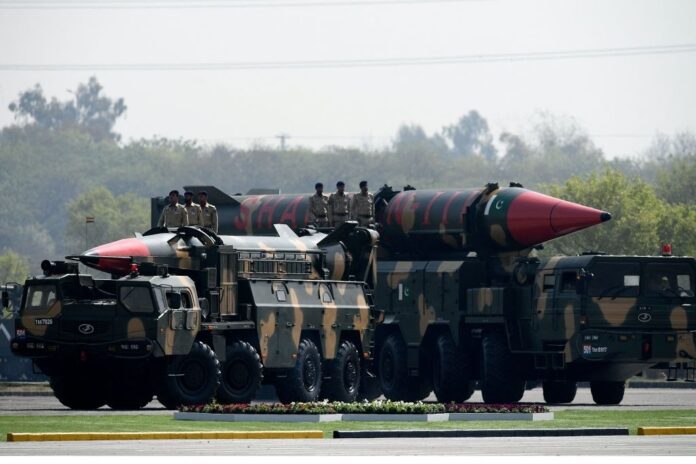ISLAMABAD: Nuclear warheads in usable stockpiles are increasing, the Nuclear Weapons Ban Monitor warned Monday, along with its partner, the International Campaign to Abolish Nuclear Weapons.
The monitor said that nine nuclear-armed states had a combined arsenal of 12,705 nuclear warheads at the start of 2022.
An estimated 9,440 warheads — with a collective yield equivalent to around 138,000 Hiroshima bombs — constituted usable stockpiles for use by the nuclear-armed states on their missiles, aircraft, submarines, and ships.
“The war in Ukraine and (Russian President) Vladimir Putin’s nuclear threats are yet another stark reminder of the profound dangers of living in a world where some states insist their security must rest on the capacity for massive and indiscriminate nuclear violence,” said Henriette Westhrin, the secretary-general of the humanitarian relief organisation Norwegian People’s Aid, which published its annual Nuclear Weapons Ban Monitor report on Monday.
“We have ended up trusting luck rather than the supposed stabilising effects of nuclear deterrence. It is deeply concerning that the global stockpile of nuclear weapons available for use is now increasing.”
Global useable stockpiles
In addition to the 9,440 nuclear warheads in global usable stockpiles, at the beginning of this year, an estimated 3,265 retired, older warheads were awaiting dismantlement in Russia, the UK, and the US.
The number of nuclear warheads globally continued to drop slightly last year, but only because the US and Russia dismantled a small number of their retired, older nuclear warheads every year.
“There has not been a parallel and continued gradual reduction of the number of nuclear warheads that are available for use,” said Matt Korda of the Federation of American Scientists, one of the contributors to the monitor.
In 2007, reductions in global usable stockpiles slowed to a trickle.
“The number of nuclear warheads in global usable stockpiles had even started to increase again since its lowest point in 2017 when it was at 9,227 warheads,” said Korda.
The report shows that China, India, North Korea, and Pakistan increased their total arsenals last year.
The UK announced a significant potential increase, and the trend over the past few years has been an increase in Russia’s usable stockpile.
The US’ usable stockpiles increased slightly in 2019 but declined again in 2020 and 2021, while France’s and Israel’s stockpiles have remained constant.
No further progress in nuclear disarmament will occur unless nuclear-armed states can agree that their current usable stockpiles are not indispensable.
The monitor has found no evidence that any nuclear-armed states currently have the will to pursue nuclear disarmament or develop plans for its realisation purposefully.
UN Treaty on the Prohibition of Nuclear Weapons
There was an increasing engagement last year with the UN Treaty on the Prohibition of Nuclear Weapons (TPNW), according to the Nuclear Weapons Ban Monitor established by the Norwegian People’s Aid as a de facto monitoring regime for the treaty.
The TPNW entered into force in 2021 and has been mobilised as a vehicle for resistance to the permanence of nuclear weapons in world politics.
Yet, all the nine nuclear-armed states remain unwilling to adhere to or even engage constructively with the TPNW.
As of April 11, the new Treaty had 60 state parties, while 29 states are signatories that have not yet ratified.























